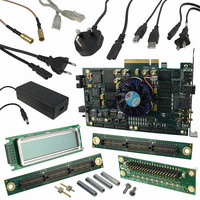DK-DEV-4SGX230N Altera, DK-DEV-4SGX230N Datasheet - Page 693

DK-DEV-4SGX230N
Manufacturer Part Number
DK-DEV-4SGX230N
Description
KIT DEVELOPMENT STRATIX IV
Manufacturer
Altera
Series
Stratix® IVr
Type
FPGAr
Datasheets
1.EP4SGX110DF29C3N.pdf
(80 pages)
2.EP4SGX110DF29C3N.pdf
(1154 pages)
3.DK-DEV-4SGX230N.pdf
(2 pages)
4.DK-DEV-4SGX530N.pdf
(57 pages)
Specifications of DK-DEV-4SGX230N
Contents
Development Board, Universal Power Supply, Cables and Software
Silicon Manufacturer
Altera
Core Architecture
FPGA
Core Sub-architecture
Stratix
Silicon Core Number
EP4S
Silicon Family Name
Stratix IV GX
Rohs Compliant
Yes
For Use With/related Products
EP4SGX230K
Lead Free Status / RoHS Status
Lead free / RoHS Compliant
Other names
544-2594
Available stocks
Company
Part Number
Manufacturer
Quantity
Price
Company:
Part Number:
DK-DEV-4SGX230N
Manufacturer:
Altera
Quantity:
135
- EP4SGX110DF29C3N PDF datasheet
- EP4SGX110DF29C3N PDF datasheet #2
- DK-DEV-4SGX230N PDF datasheet #3
- DK-DEV-4SGX530N PDF datasheet #4
- Current page: 693 of 1154
- Download datasheet (32Mb)
Chapter 2: Transceiver Clocking in Stratix IV Devices
Transceiver Channel Datapath Clocking
February 2011 Altera Corporation
Transmitter Channel-to-Channel Skew Optimization for Modes Other than
Basic (PMA Direct) Mode
High-speed serial clock and low-speed parallel clock skew between channels and
unequal latency in the transmitter phase compensation FIFO contribute to transmitter
channel-to-channel skew. Transmitter datapath clocking is set up to provide low
channel-to-channel skew when compared with non-bonded channel configurations.
■
■
In bonded channel configurations—the high-speed serial clock and low-speed
parallel clock for all bonded channels are generated by the CMU0 clock divider or
the ATX clock divider block, resulting in lower channel-to-channel clock skew.
The transmitter phase compensation FIFO in all bonded channels (except in Basic
[PMA Direct] ×N mode) share common pointers and control logic generated in the
central control unit (CCU), resulting in equal latency in the transmitter phase
compensation FIFO of all bonded channels. The lower transceiver clock skew and
equal latency in the transmitter phase compensation FIFOs in all channels
provides lower channel-to-channel skew in bonded channel configurations.
In non-bonded channel configurations—the high-speed serial clock and low-speed
parallel clock in each channel are generated independently by its local clock
divider. This results in higher channel-to-channel clock skew.
The transmitter phase compensation FIFO in each non-bonded channel (except in
Basic [PMA Direct] mode) has its own pointers and control logic that can result in
unequal latency in the transmitter phase compensation FIFO of each channel. The
higher transceiver clock skew and unequal latency in the transmitter phase
compensation FIFO in each channel can result in higher channel-to-channel skew.
Stratix IV Device Handbook Volume 2: Transceivers
2–21
Related parts for DK-DEV-4SGX230N
Image
Part Number
Description
Manufacturer
Datasheet
Request
R

Part Number:
Description:
KIT DEV ARRIA II GX FPGA 2AGX125
Manufacturer:
Altera
Datasheet:

Part Number:
Description:
KIT DEV CYCLONE III LS EP3CLS200
Manufacturer:
Altera
Datasheet:

Part Number:
Description:
KIT DEV STRATIX IV FPGA 4SE530
Manufacturer:
Altera
Datasheet:

Part Number:
Description:
KIT DEV FPGA 2AGX260 W/6.375G TX
Manufacturer:
Altera
Datasheet:

Part Number:
Description:
KIT DEV MAX V 5M570Z
Manufacturer:
Altera
Datasheet:

Part Number:
Description:
KIT DEV STRATIX V FPGA 5SGXEA7
Manufacturer:
Altera
Datasheet:

Part Number:
Description:
KIT DEVELOPMENT STRATIX III
Manufacturer:
Altera
Datasheet:

Part Number:
Description:
KIT DEV ARRIA GX 1AGX60N
Manufacturer:
Altera
Datasheet:

Part Number:
Description:
KIT STARTER CYCLONE IV GX
Manufacturer:
Altera
Datasheet:

Part Number:
Description:
KIT DEVELOPMENT STRATIX IV
Manufacturer:
Altera
Datasheet:

Part Number:
Description:
CPLD, EP610 Family, ECMOS Process, 300 Gates, 16 Macro Cells, 16 Reg., 16 User I/Os, 5V Supply, 35 Speed Grade, 24DIP
Manufacturer:
Altera Corporation
Datasheet:

Part Number:
Description:
CPLD, EP610 Family, ECMOS Process, 300 Gates, 16 Macro Cells, 16 Reg., 16 User I/Os, 5V Supply, 15 Speed Grade, 24DIP
Manufacturer:
Altera Corporation
Datasheet:











